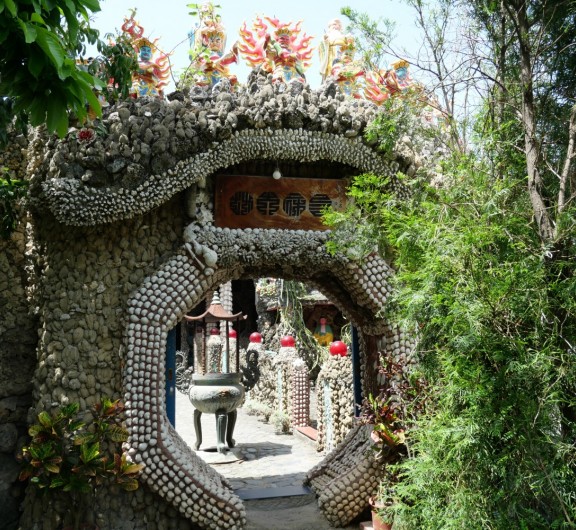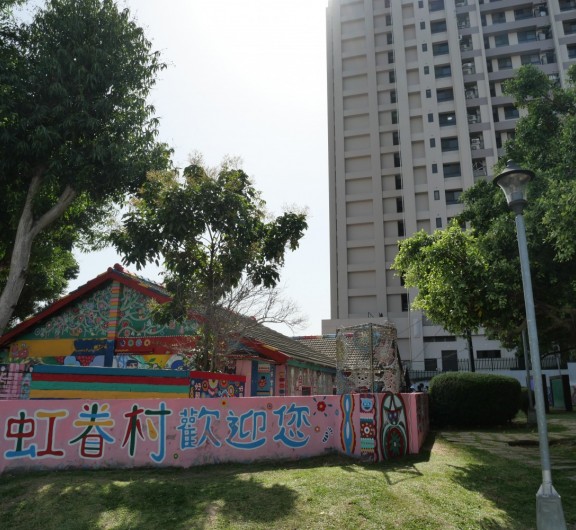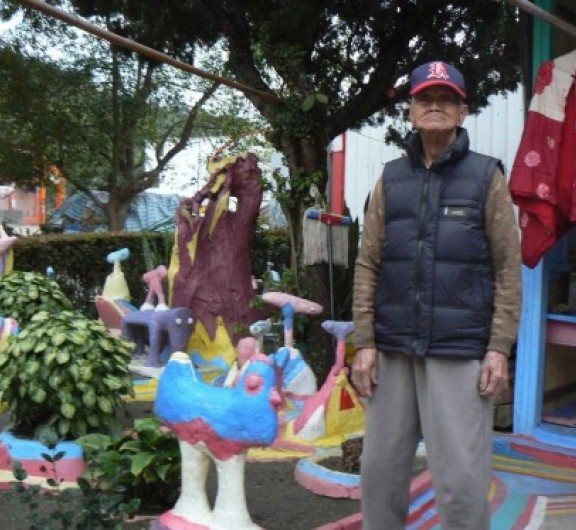Chen Ruiguang
About the Artist/Site
East of a long coastal plain, around fifty kilometers in length, the central part of the island of Taiwan is made up of a mountainous zone which runs from north to south. Abutting Alishan Mountain, the prefecture of Jiayi, in the center of the island, is a region of tropical agriculture and luxuriant vegetation. Fields of pineapples, bananas, and coconuts run side by side with coffee plantations, which need the shade of the former trees to develop. If nature shows herself to be generous here, the peasants who work this land have not been as fortunate. The parcels of property are so small that their children often have to look for work in the city. Those who remain, if they can be content with modest income, at least have the satisfaction that they don’t have to kill themselves working: there is little hard work beyond the periods of planting or harvest: here nature accomplishes the task for them.
Perhaps this relative availability of time led Chen Ruiguang, a peasant in the Zhong Pu district, to want to practice calligraphy. This art had pleased him when he was young, but as he did not pursue his academic studies beyond elementary school, he remained ignorant about this art form. His first attempts on paper were clumsy, and without doubt he himself was unsatisfied with these early results. He therefore decided to change his approach and began to copy Egyptian hieroglyphics on tree bark. Encouraged by the results, he thought that he would also try to copy primitive Chinese characters, the type which had been engraved thousands of years before on turtle shells (these Jiakuwen constitute the first known examples of Chinese writing). The exercise pleased him, and wanting to move from copying to actual creation, he began to imagine and to draw other works of the same type, but this time of his own design.
Around the year 2000, at around fifty years old, Chen realized that the substructures of bark that he had used up to that time were quite ephemeral. He told himself that if he would engrave his characters on a rock face, he would be able to leave more permanent traces of his work, in the style of earlier emperors whose calligraphies were reproduced on sacred Taoist mountains. Not far from his home is a small cliff whose face is smooth enough to be engraved, and which extends around one hundred meters in length. Helped by some friends, he cleared the surroundings and opened up a trail to access the cliff face (a trail which was paved several years later). To the deep despair of Chen’s wife, who believed him to be somewhat mentally deranged, he decided from that point to dedicate himself exclusively to this work. To this end he installed bamboo scaffolding to enable access to the higher sections of the cliff—more than ten meters high—and he began to carve.
In little more than five years, Chen had almost completely covered the available cliff surface. But due to the humidity of the climate the first carvings began to be covered with moss, so he thinks that he will go back and clean those up in order to make them more visible.
Unfortunately I wasn’t able to obtain reliable information about the reasons he worked so doggedly nor about any meanings which drive this strange calligraphy, or about any mysterious messages they might conceal. The neighbors say that they can read nothing in the engravings. This may be true, at least because the creator seems to be keeping his secrets to himself. It is, however, certain that archeologists in future centuries will lose themselves in conjectures trying to decipher the sense of these inscriptions which, for a neophyte, have every appearance of being real Chinese characters. In utilizing elements which comprise the real characters, Chen has created an imaginary alphabet for his own pleasure. Only a few designs or gestures of animals or faces would make an observer suspect the deception. But it is precisely this which intrigues the passerby with the mystery of these inscriptions: it is a safe bet that the viewer would be less intrigued if s/he only found her/himself in the presence of simple reproductions of virtuous phrases.
~Remy Ricordeau
Translated by Jo Farb Hernández
Map & Site Information
Zhong Pu, Jiayi Prefecture
tw
Latitude/Longitude: 24.538231 / 118.115086
Nearby Environments







Post your comment
Comments
No one has commented on this page yet.